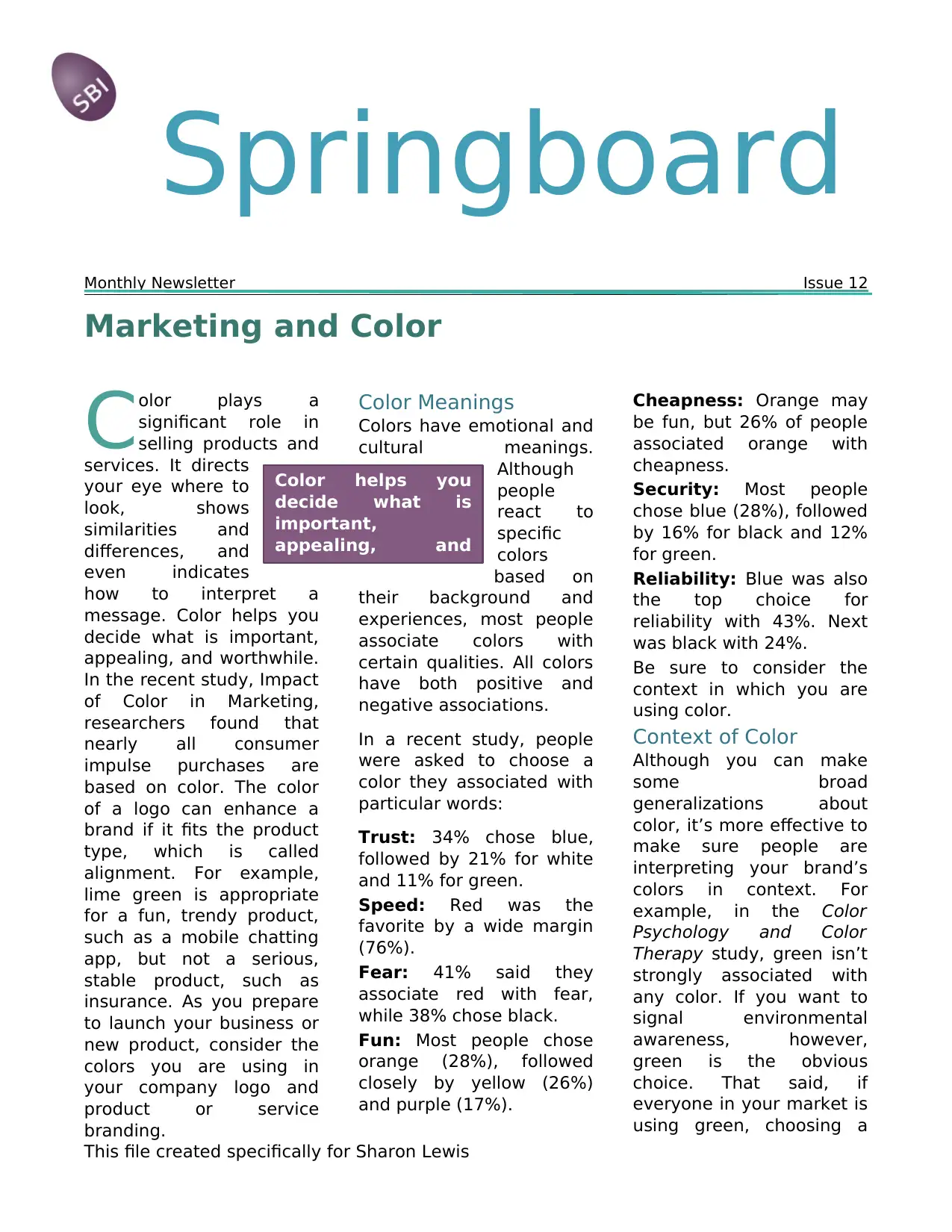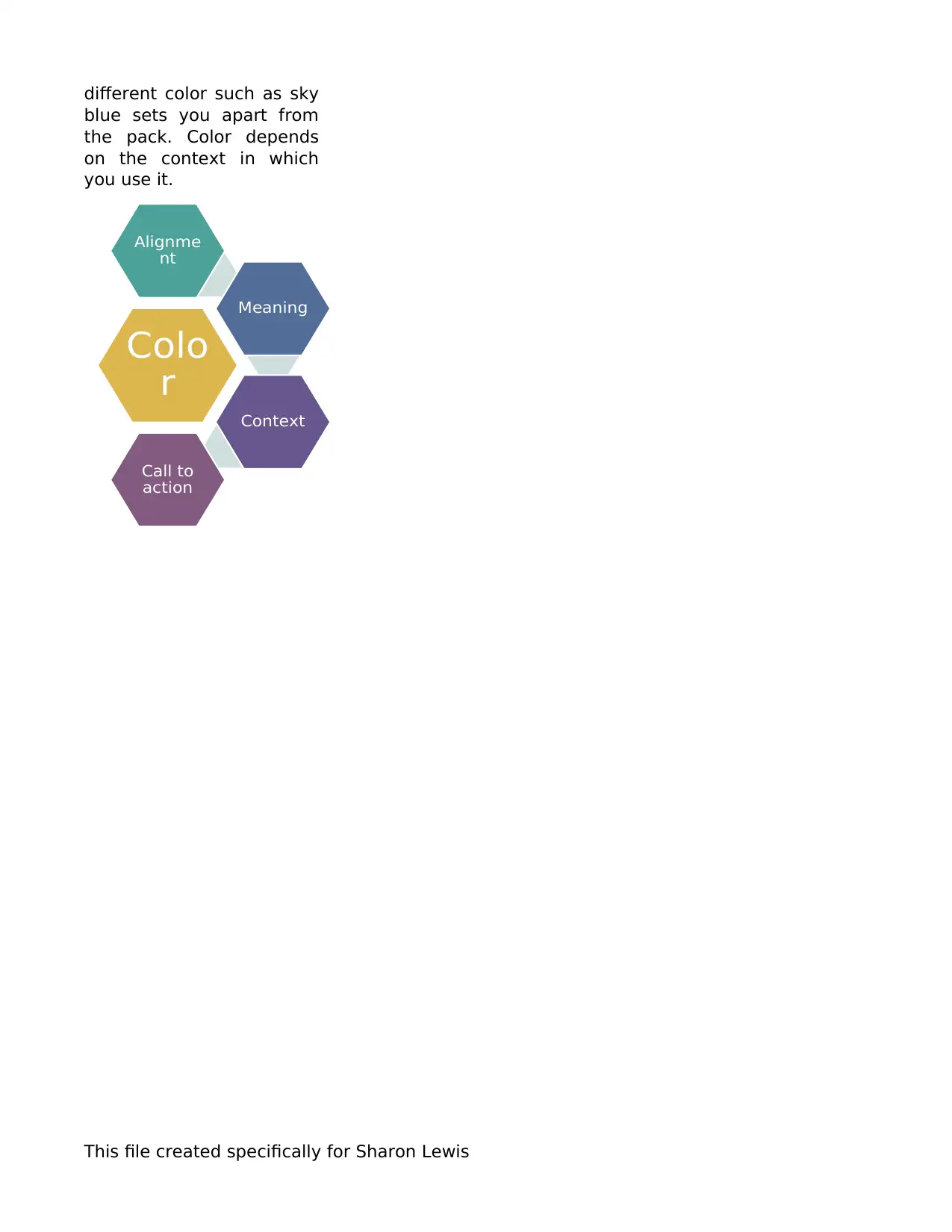The Role of Color in Marketing and Branding
VerifiedAdded on 2023/01/09
|2
|512
|98
AI Summary
This article explores the role of color in marketing and branding. It discusses how color influences consumer perception and decision-making, and the impact of color on impulse purchases. It also examines the associations people have with different colors and the importance of context in using color effectively.
Contribute Materials
Your contribution can guide someone’s learning journey. Share your
documents today.
1 out of 2


![[object Object]](/_next/static/media/star-bottom.7253800d.svg)